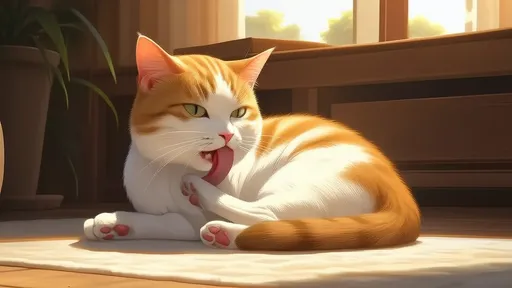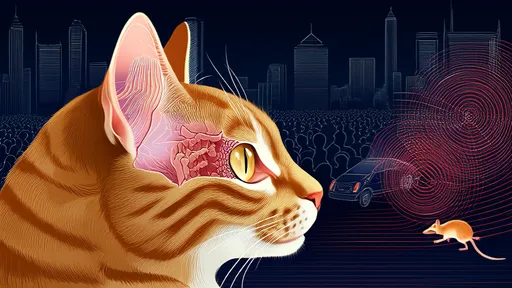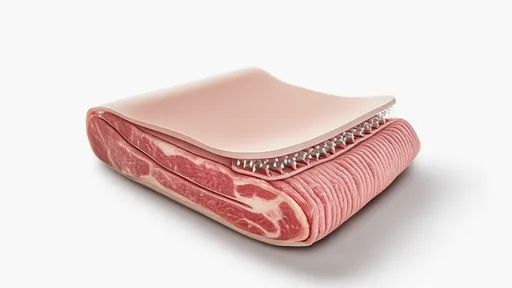For many cat owners, the sight of their feline companion meticulously grooming itself is a familiar and often endearing one. Cats are known for their fastidious nature, spending hours each day licking their fur to keep it clean and free of debris. However, when this behavior becomes excessive, it may signal an underlying issue that goes beyond simple hygiene. Compulsive over-grooming in cats is increasingly recognized as a manifestation of anxiety, linked to complex neural pathways that govern stress responses and repetitive behaviors.
The act of grooming itself is hardwired into a cat's biology. From an early age, kittens learn to lick themselves and their littermates as a way to bond and maintain cleanliness. This behavior is regulated by the brain's reward system, which releases feel-good chemicals like endorphins during the process. But when a cat begins to groom excessively—to the point of causing bald patches, skin irritation, or even wounds—the behavior crosses into the realm of compulsion. Researchers believe this shift is tied to malfunctions in the neural circuits that regulate stress and habitual actions.
At the heart of this issue is the feline brain's response to anxiety. When a cat experiences chronic stress, whether from environmental changes, lack of stimulation, or underlying medical conditions, its amygdala—the brain's fear center—becomes hyperactive. This triggers a cascade of neural signals that amplify the urge to perform repetitive behaviors as a coping mechanism. Over-grooming, in this context, serves as a maladaptive way to self-soothe, much like nail-biting or hair-pulling in humans. The more the cat engages in the behavior, the more entrenched the neural pathway becomes, creating a vicious cycle that is difficult to break.
What makes this behavior particularly challenging to address is its similarity to other conditions. Allergies, skin infections, and even parasites can cause itching and discomfort, leading a cat to lick or chew at its fur. Before attributing over-grooming to anxiety, veterinarians must rule out these physical causes through thorough examinations and tests. Once medical issues are excluded, the focus shifts to the cat's environment and emotional well-being. Factors such as a chaotic household, the introduction of a new pet, or even a change in the owner's routine can act as stressors that trigger compulsive grooming.
Treatment for compulsive over-grooming often requires a multifaceted approach. Behavioral modification techniques, such as providing environmental enrichment through toys, climbing structures, and interactive play, can help redirect the cat's focus away from grooming. In some cases, veterinarians may recommend anti-anxiety medications that target the serotonin system, which plays a key role in regulating mood and compulsive behaviors. Additionally, synthetic pheromone diffusers, which mimic the calming scents produced by cats, have shown promise in reducing stress-related behaviors.
Understanding the neural underpinnings of this condition is crucial for developing more effective interventions. Recent studies have highlighted the role of the basal ganglia, a group of nuclei in the brain involved in habit formation, in compulsive behaviors. When this region becomes overactive, it can override the brain's ability to suppress repetitive actions, even when they are harmful. By identifying the specific neurotransmitters and neural pathways involved, scientists hope to create targeted therapies that can disrupt the cycle of compulsive grooming without causing unwanted side effects.
For cat owners, recognizing the signs of compulsive over-grooming early can make a significant difference in their pet's quality of life. Bald spots, red or inflamed skin, and a preoccupation with licking certain areas are all red flags that warrant attention. Creating a stable, low-stress environment and providing ample mental stimulation can go a long way in preventing the development of compulsive behaviors. In cases where the behavior is already entrenched, working closely with a veterinarian or a veterinary behaviorist can help tailor a treatment plan that addresses both the psychological and physiological aspects of the condition.
The link between anxiety and compulsive over-grooming in cats underscores the importance of viewing animal behavior through a holistic lens. Just as in humans, repetitive behaviors in animals often serve as outward manifestations of internal distress. By deepening our understanding of the neural mechanisms at play, we can develop more compassionate and effective strategies to help our feline companions lead happier, healthier lives. The bond between cats and their owners is a special one, and addressing issues like compulsive grooming with empathy and science-backed solutions only strengthens that connection.

By /Jun 13, 2025

By /Jun 13, 2025

By /Jun 13, 2025

By /Jun 13, 2025

By /Jun 13, 2025

By /Jun 13, 2025

By /Jun 13, 2025

By /Jun 13, 2025

By /Jun 13, 2025

By /Jun 13, 2025

By /Jun 13, 2025

By /Jun 13, 2025

By /Jun 13, 2025

By /Jun 13, 2025

By /Jun 13, 2025

By /Jun 13, 2025

By /Jun 12, 2025

By /Jun 12, 2025

By /Jun 12, 2025

By /Jun 12, 2025